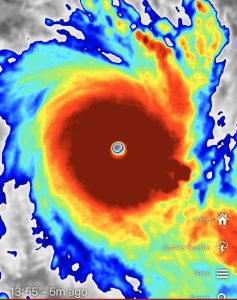Cyclone Ambali breaks records, a look back

Cyclone Ambali put on quite a show for us Thursday with it’s extreme rapid intensification phase. The system was upgraded to a tropical storm at 18:00 UTC Wednesday with winds of 35 knots (40 mph), and likely attained Category 5 intensity with winds of 140 knots (160 mph) 24 hours later – A 120 mph increase in 24 hours, the 2nd quickest intensification phase ever recorded behind Hurricane Patricia in 2015, and the quickest intensification rate ever recorded in the Southern Hemisphere. So, how does Ambali’s intensification phase compare against other storms?
Here are a few examples.
Hurricane Patricia (2015) – 75mph to 200mph in 24 hours, 125mph increase
Cyclone Ernie (2017) – 45mph to 165mph in 12 hours, 85mph increase
Typhoon Hagibis (2019) – 65mph to 180mph in 24 hours, 115mph increase
Hurricane Wilma (2005) – 75mph to 195mph in 24 hours, 120mph increase
Cyclone Veronica (2019) – 85mph to 155mph in 24 hours, 70mph increase
Ambali’s 120 mph increase in 24 hours is extraordinarily rare. While rapidly intensifying storms do happen every year, a storm increasing 120 mph in 24 hours does not. Conditions were nearly perfect for rapid intensification of Ambali. 30C waters were in the storm’s path shortly after formation for at least 2 days, along with wind shear less than 5 knots near the storm’s peak intensity. The storm’s record peak intensity makes it the first Very Intense Tropical Cyclone on the local scale since Fantala in 2016, and the only A name in the basin to reach that status.

As Ambali continues to weaken, Belna is intensifying – and is a significant threat to Madagascar. Stay tuned to Force Thirteen’s various media outlets for the latest on both Ambali & Belna.
